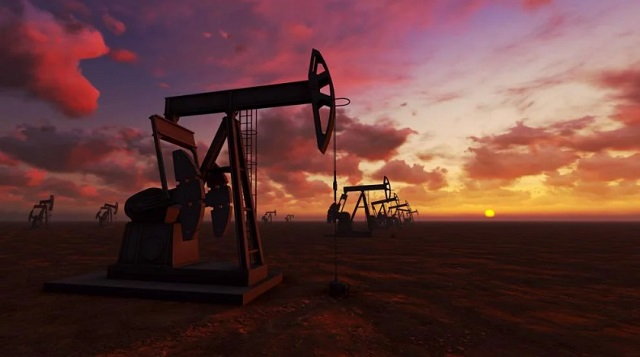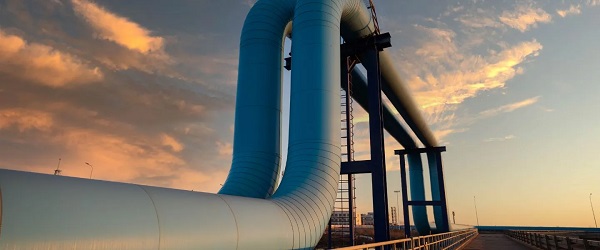Energy
Texas oil and natural gas production reached new record highs in July

From The Center Square
By
Texas’ oil and natural gas production reached new record highs in July, after breaking records in May.
Texas’ energy exports and production of natural gas liquids (NGLs) also broke records, according to new monthly energy economic analysis by Texas Oil & Gas Association.
TXOGA’s projections show that Texas set new records for crude oil production of 5.76 million barrels per day (mb/d); natural gas marketed production of 32.8 billion cubic feet per day (bcf/d); and natural gas liquids (NGLs) production of 3.85 mb/d – each setting record highs.
Texas’ petroleum value chain highlights for May 2024 also achieved records. Refiner and blender crude oil net inputs (5.69 mb/d) were the highest on record when evaluating EIA data that goes back to 1981.
Texas now accounts for 42.8% of all U.S. crude oil production and 28.3% of all U.S. natural gas marketed production year-to-date through July 2024, according to TXOGA estimates.
“The Lone Star State’s oil and natural gas industry is not only producing more, but doing so with unmatched efficiency,” TXOGA President Todd Staples said. “These latest numbers further reinforce the industry’s ongoing commitment to utilizing the latest technologies and innovations to produce abundant, affordable, and reliable energy.”

Texas exported $95.7 billion worth of energy products in the first five months of 2024, according to U.S. International Trade Commission data.
Texas exported $10 billion of crude oil primarily to Asia and Europe. Texas also exported nearly $6 billion worth of refined petroleum products, primarily to North America, Latin America and the Caribbean.
Natural gas exports accounted for $1.6 billion and hydrocarbon gas liquids, $2.2 billion.

Texas production records “underscore Texas’ dominant position in the U.S. energy market and ongoing contributions to national energy security,” TXOGA says.
While several news outlets have claimed oil and natural gas production records are a credit to Biden-Harris administration policies, those in the Texas industry point out that production records wouldn’t exist without Texas setting them.
Texas is leading in production because of a supportive state government and regulatory environment and facilities that primarily operate on private land, Texas industry experts have told The Center Square.
The Institute for Energy Research has identified over 200 actions the Biden-Harris administration has taken against the U.S. oil and natural gas industry, including halting federal onshore and offshore permits and leases, hamstringing production in other states.
As the Biden-Harris administration has advanced restrictions and threatened to tax and fine the industry, Texas Gov. Greg Abbott, the Texas legislature, state comptroller and the Texas Railroad Commission have implemented measures to facilitate production and safeguard the industry from federal actions.
While permits are held up by federal agencies, the RCC, which regulates the Texas oil and natural gas industry, continues to approve permits and implement conservation efforts, The Center Square has reported.
As the federal government advances investment policies targeting the fossil fuel industry, Texas law prohibits financial companies from implementing them and prohibits state government entities from investing in them.
Texas is also aggressively suing the Biden-Harris administration on several fronts. These include efforts to block EPA methane rules that would hamper the natural gas industry and blocking an attempt to classify lizards as endangered in the Permian Basin, one of the richest oil and natural gas fields in the world, among other policies.
Identifying threats posed by the current administration, those in the Texas industry have called on Congress to pass permitting reform, among other measures, The Center Square reported.
Staples also maintains that Texas’ production records “are not guaranteed. We cannot take for granted that this industry can continue to rewrite its record book in the face of federal policies blatantly designed to undermine progress. Delayed permits, canceled pipeline projects, closed and delayed federal leasing programs and incoherent regulations hurt American consumers and stifle our ability to deliver energy freedom and security around the world.”
Energy
National media energy attacks: Bureau chiefs or three major Canadian newspapers woefully misinformed about pipelines

From the Fraser Institute
These three allegedly well informed national opinion-shapers are incredibly ignorant of national energy realities.
In a recent episode of CPAC PrimeTime Politics, three bureau chiefs from three major Canadian newspapers discussed the fracas between Alberta Premier Danielle Smith and Prime Minister Mark Carney. The Smith government plans to submit a proposal to Ottawa to build an oil pipeline from Alberta to British Columbia’s north coast. The episode underscored the profound disconnect between these major journalistic gatekeepers and the realities of energy policy in Canada.
First out of the gate, the Globe and Mail’s Robert Fife made the (false) argument that we already have the Trans Mountain pipeline expansion (TMX), which is only running at 70 per cent, so we don’t need additional pipelines. This variant of the “no market case” argument misunderstands both the economics of running pipelines and the reality of how much oilsands production can increase to supply foreign markets if—and only if—there’s a way to get it there.
In reality, since the TMX expansion entered service, about 80 per cent of the system’s capacity is reserved for long-term contracts by committed shippers, and the rest is available on a monthly basis for spot shippers who pay higher rates due largely to government-imposed costs of construction. From June 2024 to June 2025, committed capacity was fully utilized each month, averaging 99 per cent utilization. Simply put, TMX is essentially fully subscribed and flowing at a high percentage of its physical capacity.
And the idea that we don’t need additional capacity is also silly. According to S&P Global, Canadian oilsands production will reach a record annual average production of 3.5 million barrels per day (b/d), and by 2030 could top 3.9 million b/d (that’s 500,000 b/d higher than 2024). Without pipeline expansion, this growth may not happen. Alberta’s government, which is already coordinating with pipeline companies such as Enbridge, hopes to see oilsands production double in coming years.
Next, Mia Rabson, Ottawa deputy bureau chief of the Canadian Press, implied that Smith’s proposal is not viable because it comes from government, not the private sector. But Rabson neglected to say that it would be foolish for any company to prepare a very expensive project proposal in light of current massive regulatory legislative barriers (tanker ban off B.C. coast, oil and gas emission cap, etc.). Indeed, proposal costs can run into the billions.
Finally, Joel-Denis Bellavance, Ottawa bureau chief of La Presse, opined that a year ago “building a pipeline was not part of the national conversation.” Really? On what planet? How thick is the bubble around Quebec? Is it like bulletproof Perspex? This is a person helping shape Quebec opinion on pipelines in Western Canada, and if we take him at his word, he doesn’t know that pipelines and energy infrastructure have been on the agenda for quite some time now.
If these are the gatekeepers of Canadian news in central Canada, it’s no wonder that the citizenry seems so woefully uninformed about the need to build new pipelines, to move Alberta oil and gas to foreign markets beyond the United States, to strengthen Canada’s economy and to employ in many provinces people who don’t work in the media.
Carbon Tax
Back Door Carbon Tax: Goal Of Climate Lawfare Movement To Drive Up Price Of Energy


From the Daily Caller News Foundation
The energy sector has long been a lightning rod for policy battles, but few moments crystallize the tension between environmental activism and economic reality quite like David Bookbinder’s recent admission. A veteran litigator who’s spent years spearheading lawsuits against major oil companies on behalf of Colorado municipalities — including Boulder — Bookbinder let the cat out of the bag during a recent Federalist Society panel.
In an all-too-rare acknowledgement of the lawfare campaign’s real goal, Bookbinder admitted that he views the lawsuits mainly as a proxy for a carbon tax. In other words, the winning or losing of any of the cases is irrelevant; in Bookbinder’s view, the process becomes the punishment as companies and ultimately consumers pay the price for using oil and gas and the industry’s refined products.
“Tort liability is an indirect carbon tax,” Bookbinder stated plainly. “You sue an oil company, an oil company is liable. The oil company then passes that liability on to the people who are buying its products … The people who buy those products are now going to be paying for the cost imposed by those products. … [This is] somewhat of a convoluted way to achieve the goals of a carbon tax.”
Dear Readers:
As a nonprofit, we are dependent on the generosity of our readers.
Please consider making a small donation of any amount here.
Thank you!
The cynicism is so thick you could cut it with a knife.
On one hand, the fact that winning is irrelevant to the plaintiff firms who bring the cases has become obvious over the last two years as case after case has been dismissed by judges in at least ten separate jurisdictions. The fact that almost every case has been dismissed on the same legal grounds only serves to illustrate that reality.
Bookbinder’s frank admission lands with particular force at a pivotal juncture. In late September, the Department of Justice, along with 26 state attorneys general and more than 100 members of Congress, urged the Supreme Court to grant certiorari in one of the few remaining active cases in this lawfare effort, in Boulder, Colorado.
Their briefs contend that allowing these suits to proceed unchecked would “upend the constitutional balance” between federal and state authority, potentially “bankrupt[ing] the U.S. energy sector” by empowering local courts to override national energy policy.
For the companies named in the suits, these cases represent not just a tiresome form of legal Kabuki Theater, but a financial and time sink that cuts profits and inhibits capital investments in more productive enterprises. You know, like producing oil and gas to meet America’s ravenous energy needs in an age of explosive artificial intelligence growth.
“I’d prefer an actual carbon tax, but if we can’t get one of those, and I don’t think anyone on this panel would [dis]agree Congress is likely to take on climate change anytime soon—so this is a rather convoluted way to achieve the goals of a carbon tax,” Bookbinder elaborated in his panel discussion.
John Yoo, the eminent UC Berkeley law professor and former Bush-era official, didn’t hold back in his analysis for National Review. He described the lawfare campaign as a “backdoor” assault on the energy industry, circumventing the federal government’s established role in environmental regulation.
“There are a variety of cities and states that don’t agree with the federal government, and they would like to see the energy companies taxed,” Yoo explained. “Some of them probably like to see them go out of business. Since they can’t persuade through the normal political process of elections and legislation like the rest of the country, they’re using this back door,” he added.
What we see in action here is the fact that, although the climate alarm industry that is largely funded by an array of dark money NGOs and billionaire foundations finds itself on the defensive amid the aggressive policy actions of the Trump 47 administration, it is far from dead. Like the Democrat party in which they play an integral role, the alarmists are fighting the battle in their last bastion of power: The courts.
As long as there are city and county officials willing to play the role of plaintiffs in this long running Kabuki dance, and a Supreme Court unwilling to intercede, no one should doubt that this stealth carbon tax lawfare effort will keep marching right along.
-

 Agriculture16 hours ago
Agriculture16 hours agoFrom Underdog to Top Broodmare
-

 Carbon Tax2 days ago
Carbon Tax2 days agoBack Door Carbon Tax: Goal Of Climate Lawfare Movement To Drive Up Price Of Energy
-

 International2 days ago
International2 days agoTrump, Putin meeting in Hungary called off
-

 Alberta2 days ago
Alberta2 days agoCalgary’s High Property Taxes Run Counter to the ‘Alberta Advantage’
-

 City of Red Deer1 day ago
City of Red Deer1 day agoCindy Jefferies is Mayor. Tristin Brisbois, Cassandra Curtis, Jaelene Tweedle, and Adam Goodwin new Councillors – 2025 Red Deer General Election Results
-

 Alberta1 day ago
Alberta1 day agoAlberta’s licence plate vote is down to four
-

 Bruce Dowbiggin1 day ago
Bruce Dowbiggin1 day agoIs The Latest Tiger Woods’ Injury Also A Death Knell For PGA Champions Golf?
-

 Health16 hours ago
Health16 hours agoSovereignty at Stake: Why Parliament Must Review Treaties Before They’re Signed





